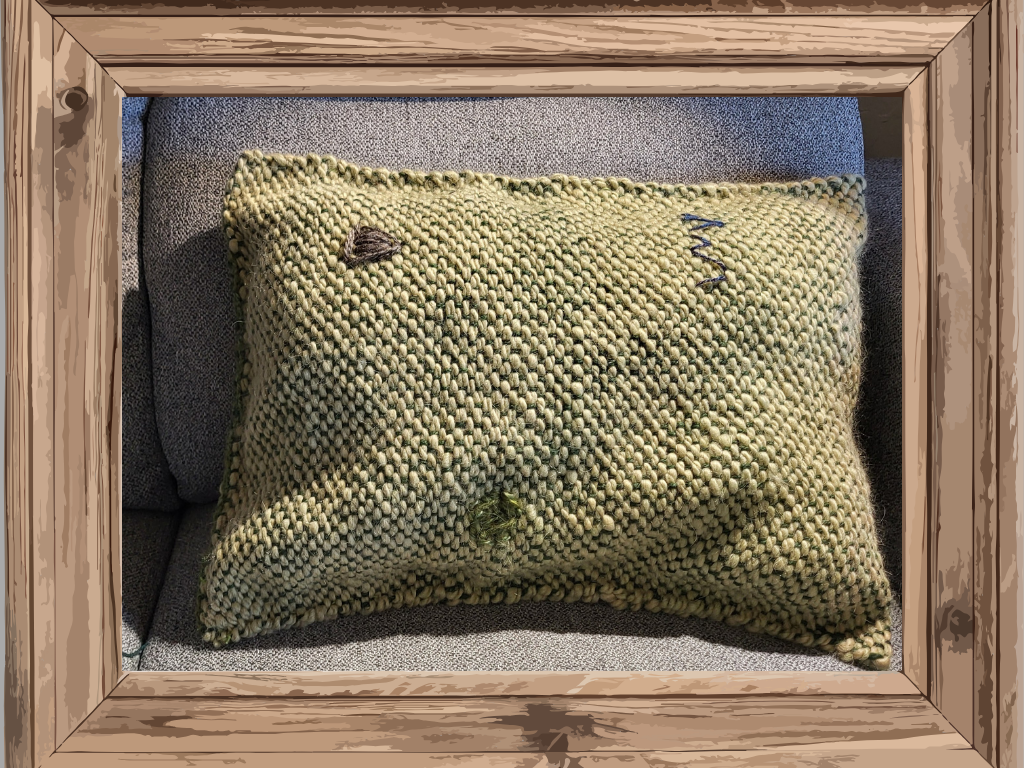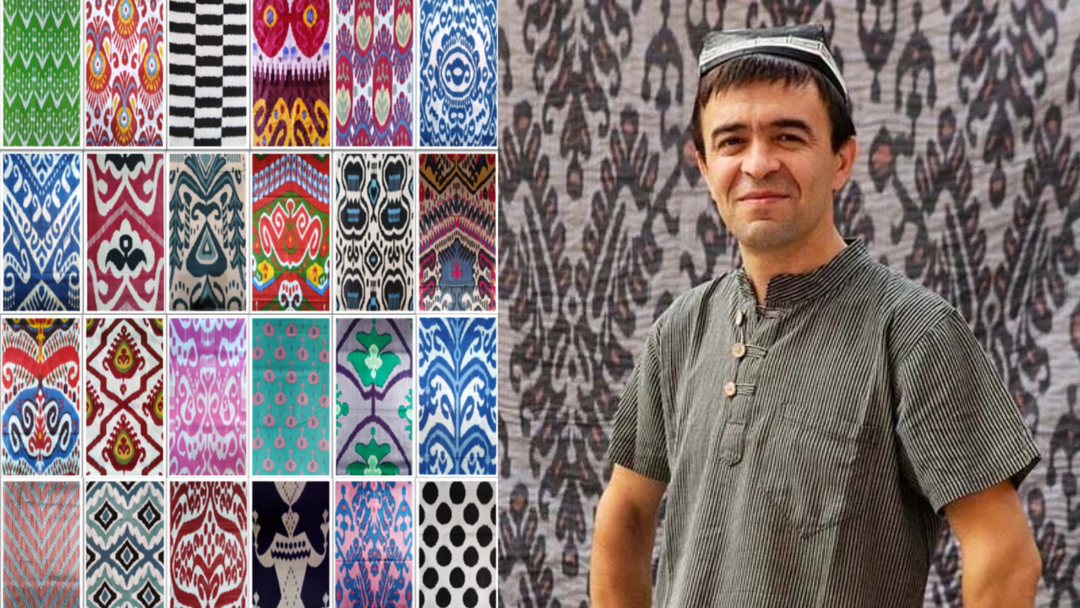One of the most prominent types of large-scale Tajik embroidery is Suzani. (In modern parlance, "Suzani" refers to both the large wall-size traditional embroidered tapestry and the embroidery style, used on clothing, home decor and accessories.) It plays an important role not only in the decoration of the home, but also in the life of the people and the pride of traditional folk art.
Suzani embodies an extraordinary variety of ornamental design: the harmony of proportions, beauty, expressiveness, and exceptional craftsmanship invoking admiration at the skill of the makers and the value of cultural tradition. Tajik Suzani is a wall hanging carpet or tapestry, embroidered with silk or lace satin stitched onto a cotton, silk, or velvet base, often trimmed with lace or black cloth. The composition is typically an open landscape with colorful rosettes and symbolic motifs.
The word "Suzani” is derived from the Persian word "Susan," which translated into English means "needle." Women embroider Suzani with multicolored threads of silk or cotton on large pieces of fabric. Traditionally, the process involves leaving a portion of fabric untouched and then passing the piece down to be finished by the next generation.
This practice represents inheritance and the continuation of ancestry, as well as a celebration of expanding the family by marriage, for which Suzani acts as a gift and meaningful bond. At ancient weddings, a Suzani tapestry was considered a spiritual token to protect against evil and endow the young couple with happiness. Historically, each region and village used different techniques and approaches to the art of Suzani and adopted different schools of thought about the craft.
The "rosette," in the form of a blossoming flower, with its round shape was often perceived as a symbol for the sun and communicated the power of a cosmic force, denoting change, love, beauty, and heavenly life. The sun and moon were typically represented by rosettes, one big and one small, and a whirlpool pattern embodied the cycle of events in the universe. Panjakent, which lies just across the border from Samarkand, Uzbekistan, and was one of the key stops along the Great Silk Road between Europe and China, is home to a unique Suzani style within Tajikistan, using unusual color combinations and rare embroidery patterns. One common Panjakent color palette consists of pale pink and brown with a sparse composition populated by round elements resembling stars in the sky. This star-like composition is commonly known as "Sitora." It has an astrological and occult connotation which can be traced back to the 7th and 8th centuries.
In Panjakent, the hand symbolizes the power that protects, creates, and facilitates childbirth. The five fingers represent Mohammed and the four caliphs, the five daily prayers, the five pillars of Islam. This is a theme that presents itself in a Panjakent embroidery pattern known as "Panja." Symbols are arranged to help relieve ones troubles, such as the use of the evil eye amulet, which is an ancient and popular cross-cultural motif to ward against darkness. In Penjikent, the evil eye amulet is represented as a magnificent five-petal flower on a long stem, and often decorates prayer mats. Each Suzani has several layers of interpretation. The first is the design of the universe. Then there are the symbols of the four elements: fire, water, earth, and air. The third layer is the meaning of life. In Suzani, the meaning of life is continuity and the cycle of generations. A Suzani has a beginning, but there is no end. A part of the embroidery is always left unfinished to be taken up by the next generation.
Each Suzani embraces the character of eternity, and also the character of the maker. The wishes of the designer express themselves in what symbols they include, such as flowers, almonds, pepper, and pomegranates, tree, vase and tea. Each element has its own meaning and philosophical significance, and should not be interpreted ambiguously. Almonds are a protective talisman, flowers are like fire, trees present life, longevity, and health, and teapots communicate hospitality and comfort. The smallest details in Suzani have meaning, and their creation is itself a connection between generations, between the future and the past.
One of the most popular modern incarnations of the traditional Suzani is the suzani pillow cover, used as a decorative accessory to bring color and meaning to the homes of true lovers of global culture. Hand-embroidered Suzani pillow covers are produced in many parts of Central Asia, including Uzbekistan and Tajikistan. Most of the HoonArts Suzani pillow covers are lovingly crafted by the artisans of Armughon Handicrafts, the handicraft arm of the Zerafshan Tourism Development Association. Most of the artisans working with Armughon are impoverished women from the rural mountain villages near Panjakent, Tajikistan (which lies in the Zerafshan River Valley), who are reviving and preserving the traditional patterns and techniques that were almost lost during the Soviet period.
For these women, the income earned from selling their work is often their only source of cash income, in a troubled economy that finds about half of the adult male population serving as labor migrants in Russia.
The Suzani pillow covers crafted by Armughon are one of the most unusual types of Suzani pillow covers originating in Central Asia. They incorporate the traditional symbols and patterns taken from the original large Suzani tapestries of the Zerafshan region, and are often combined with the colorful hand-woven ikat fabrics from Margilan, Uzbekistan and traditional patchwork ("Quroq") patterns. Each pillow cover is a unique work of art, and often one-of-a-kind or a limited artist's edition.
The Armughon production process reflects the challenges of modern life in Tajikistan. The Suzani embroidery pattern for a pillow covers is first designed by Armughon's designer, Munira Akilova, based upon her personal research regarding traditional Zerafshan patterns and their meanings. The pattern is then traced onto the selected base fabric, and Munira takes one or two stitches in each area of the pattern to reflect the color and type of embroidery stitch to be used in that section. This fabric is then included in a "kit" for each pillow cover, which includes the embroidery thread required to complete the design. If patchwork is to be included in the final design, samples of the patchwork pattern and the related fabric are also included in the kit. The kits are then sent by Uber-style taxi (the normal transportation method for small packages in Tajikistan) from Khujand to Panjakent, a journey of about 4 hours. When the rural artisans are notified of the imminent arrival of new kits, they catch rides down from their high mountain villages to Penjakent, which can take 2 or more hours.
They pick up their kits and return to their homes, where they do their work around their other household duties and frequent electricity outages. When the embroidery and patchwork is completed, the kits go back to Penjakent, and on to Khujand. Once they reach Khujand, another team of local village artisans completes the work of seams, zippers and other finishing details. The finished products then take another 5-hour journey by taxi to the capital city of Dushanbe, where they are collected and sent to the US in the next monthly air freight shipment via HoonArts' special shipping agent, FastEx Shipping Anvar. FastEx Shipping Anvar is owned by Anvar Jurabaev, whose family immigrated to the US in 2010 and settled in Brooklyn. When the pillow covers arrive in Brooklyn, Anvar forwards them on to HoonArts in Albuquerque, New Mexico, where they complete their journey.
The purchaser of each Armughon Suzani pillow cover receives a unique and dramatic piece of art that makes their home stand out from the crowd. Each pillow cover represents the traditional culture of Tajikistan, which has been at the cross-roads of civilization for 3000 years, transformed for the modern home, and helps build community and empowerment through craftsmanship.
Munira Akilova and Rikki Quintana







Leave a comment